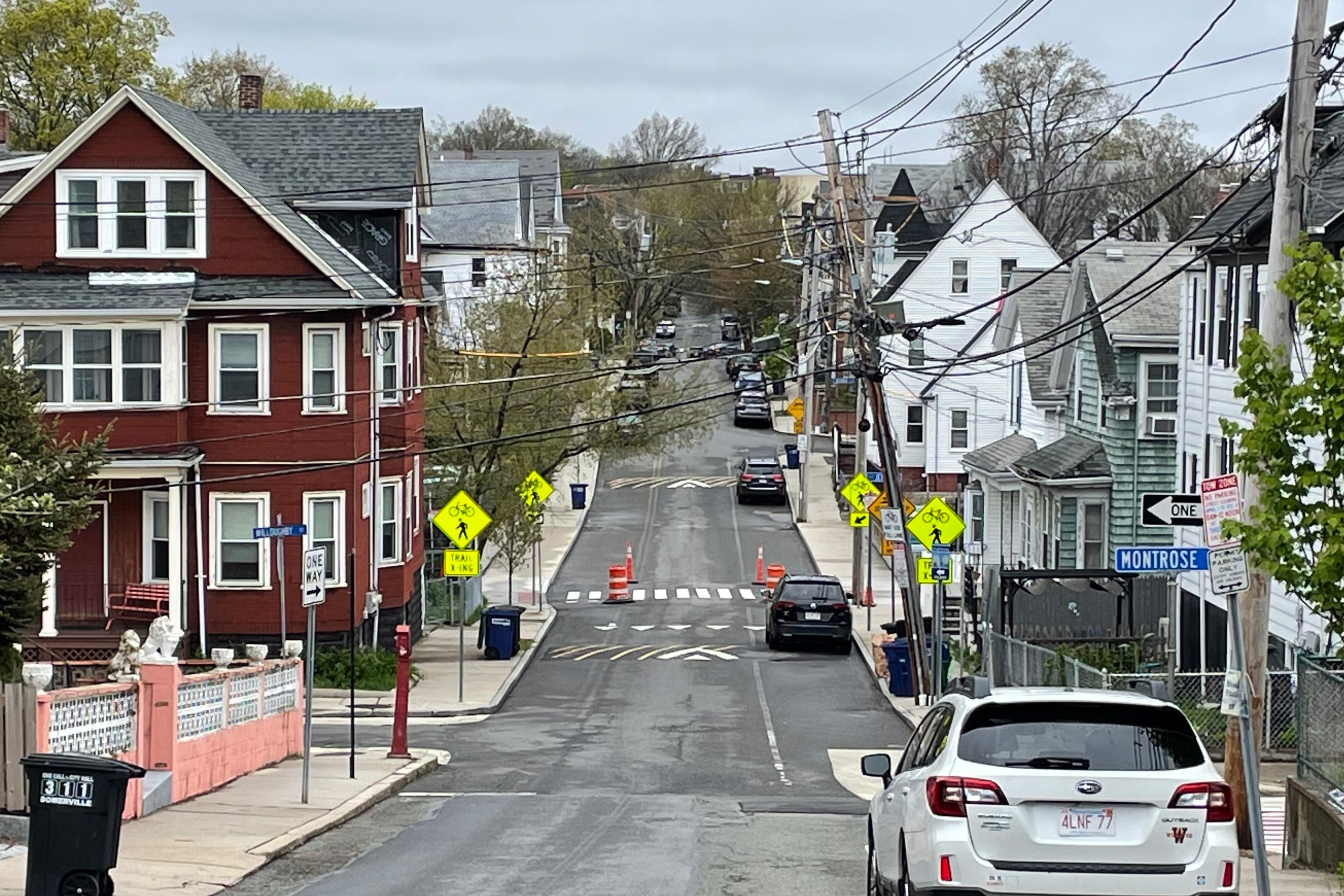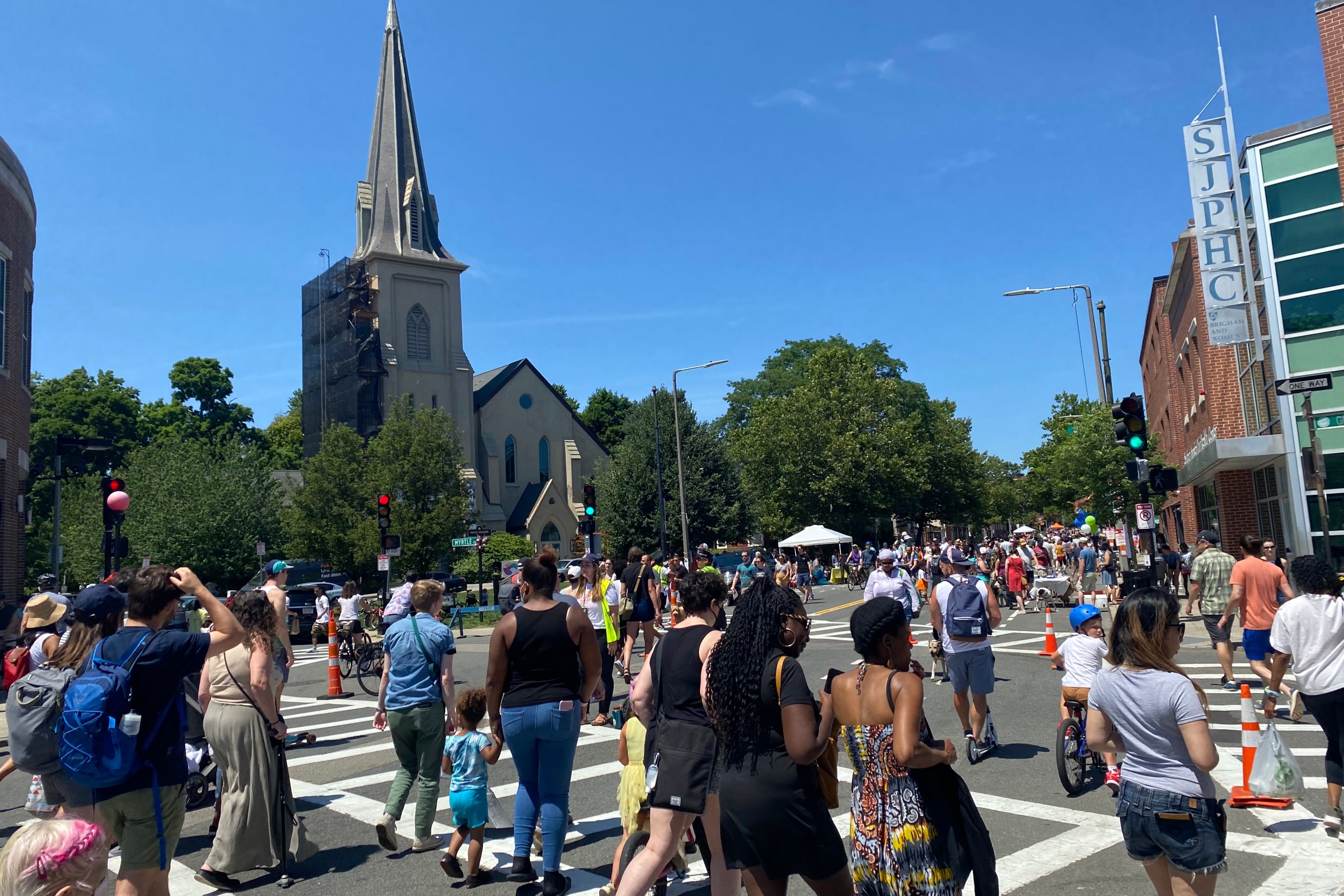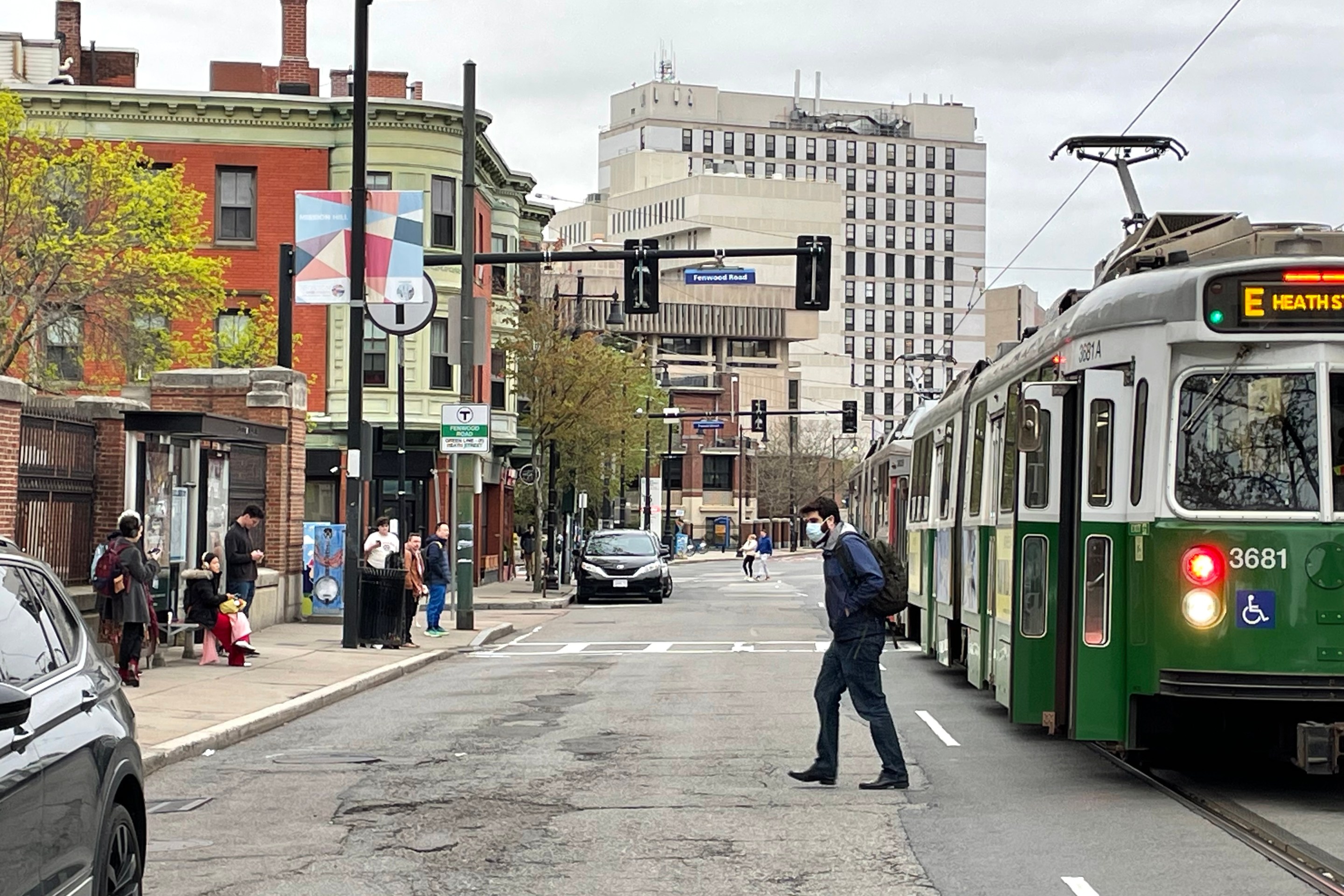Residents Discuss the Future of Blue Hill Avenue’s Bus Lanes
11:12 AM EDT on October 31, 2022
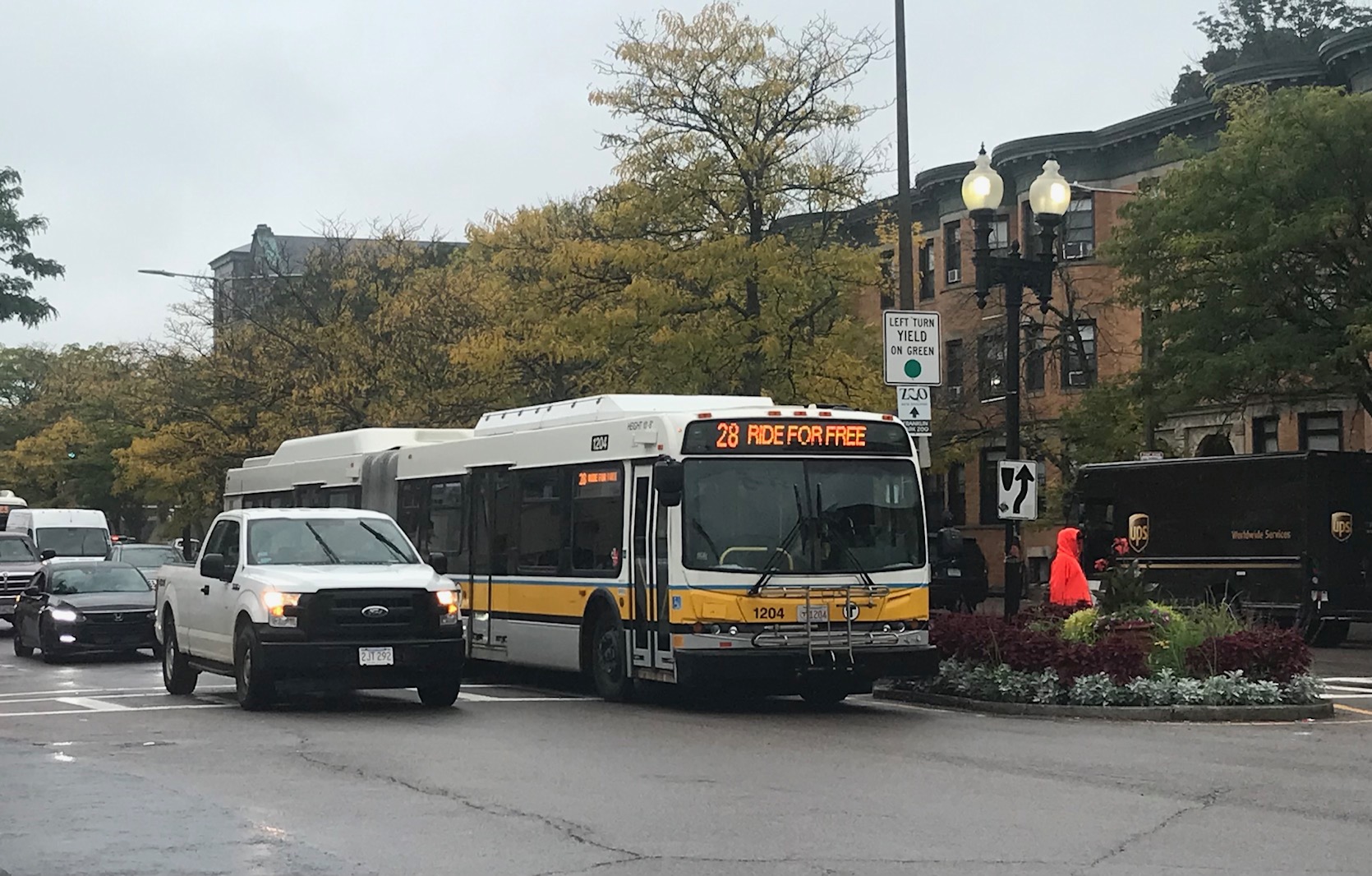
A route 28 bus advertising the fare-free pilot passes through Grove Hall on Blue Hill Avenue on October 5, 2021.
Last week, during a virtual community meeting about the transportation future of Blue Hill Avenue, residents both disagreed about the options while at the same time sympathizing with each other’s struggles traveling down the congested corridor.
The community meeting veered away from the regular presentation-plus-question-and-answer style, and instead included a thorough history lesson to remind people what Blue Hill Avenue used to be like before it was completely overtaken by cars.
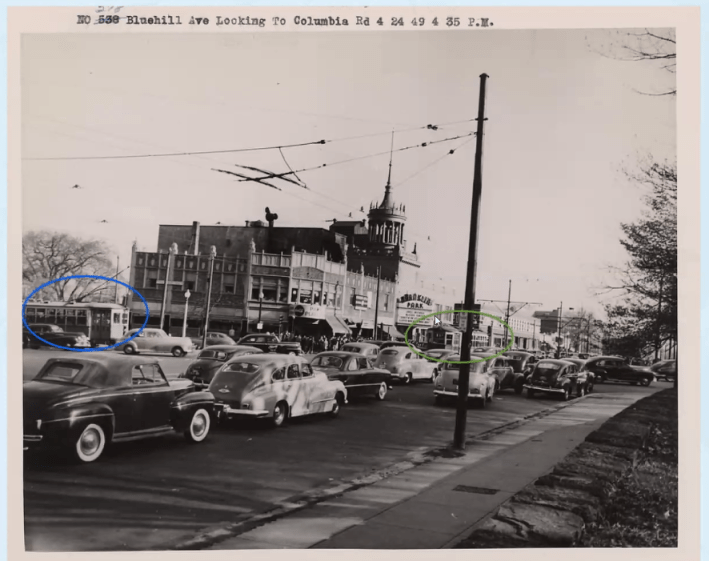
Additionally, as part of an effort to change the way community process is usually done, the city’s transportation department is working closely with a number of engagement consultants, many of them led by people of color, as well as community partners with roots in the neighborhood, like the Mattapan Food and Fitness Coalition and the Greater Mattapan Neighborhood Council.
Many residents on Tuesday’s call expressed concern over the lack of safety along the corridor, although they were also vocal with concerns about proposals that might take space away from cars.
“I feel like a lot of these small businesses are going to suffer… We already have a parking problem, it's very congested. For me, I'm concerned about my business and how my people will get through my doors,” said Ursula Vaughn Lawson, who owns barbershops in both Mattapan and Egleston Square, where New England’s first center-running bus lanes were installed last year.
Kirstie Hostetter, project manager with the City of Boston’s Transportation Department, highlighted that the corridor “is part of the city's high crash network, meaning a relatively high concentration of motor vehicle crashes take place along Blue Hill Avenue compared to the rest of the city.”
“At its core, this project is about improving safety for everyone who uses Blue Hill Avenue, no matter how they choose to travel around,” she added.
Throughout the meeting Allentza Michel, founder and managing principal of Powerful Pathways, one of the engagement consultants, reminded residents to voice the changes they would like to see and not just the project items they don’t support.
“One of the things I would like to see if this does not go through, so that we don't lose the money, is to improve on lighting and trees and maybe some speed bumps along the ways to help make things a little safer, more crosswalks for when the children are going off to school in the mornings and the afternoons,” said one resident.
The money she referenced is a $15 million federal grant awarded to the City of Boston last winter in an effort to “make our transportation systems safer, more accessible, more affordable, and more sustainable.”
Hostetter explained that without any form of bus priority, the project would lose its $15 million Department of Transportation grant, and the MBTA would also not have a reason to support the project.
“But the city is looking for funds, and is going to be designating funds that will be used to improve the whole avenue no matter what,” she added.
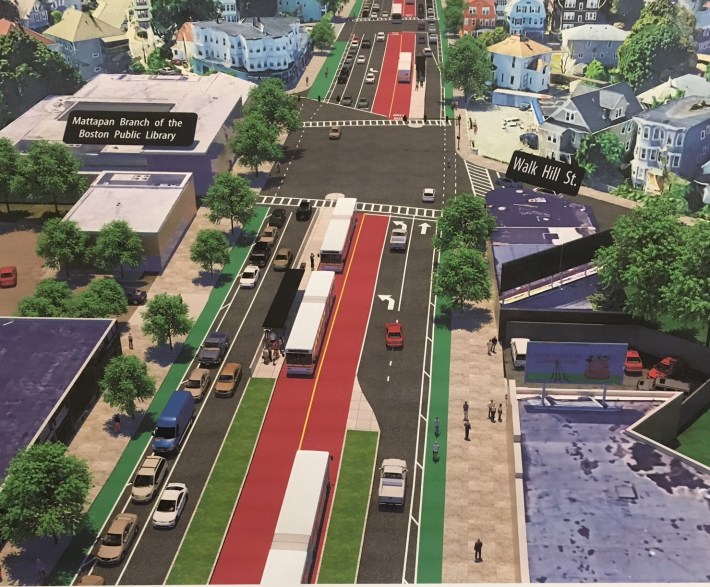
The 28 bus, which runs along Blue Hill Avenue from Mattapan Square to Ruggles, is the busiest bus route in New England, with roughly 11,000 daily riders post-pandemic.
Because it’s so busy, and because 4 out of 5 residents in the neighborhoods along Blue Hill Avenue south of Grove Hall identify as Black, according to the U.S. Census Bureau, improving the 28 is crucial to addressing structural inequities in the MBTA’s transit network.
A pre-pandemic analysis estimated that Black bus riders spend, on average, 64 more hours per year aboard MBTA buses when compared to their fellow White passengers.
During rush hours, over half of people on Blue Hill Avenue are actually sitting on buses, according to City of Boston analyses.
“Blue Hill Avenue in particular addresses a big gap in our rail system,” said Hostetter, reminding folks that this area of the city used to be served by rail before. “But right now your rail options are the Orange Line or the Red Line, and those are both about 1.5 miles away from Blue Hill Ave.”
“So why we propose something like center-running bus lanes is because it provides comparable speed and reliability benefits as rail, without being as invasive or requiring as much construction time, and it can be more flexible,” added Hostetter.
According to U.S. Census surveys, roughly one in three households in the neighborhoods along Blue Hill Avenue do not own a car, and even among car-owning households, the majority share just one car among multiple family members. Households that rent their homes are significantly more likely to be car-free than households that own their homes.
Most of the public comments at Tuesday’s virtual meeting came from drivers, but a few of them extended sympathy to bus riders who were stuck in the same traffic.
“I appreciate and understand that there's the riders of the MBTA, but there has to be consideration for what that's going to do for the commute for those of us who drive, and it's horrendous now. Unless in fact there's some way that another lane or a center lane is going to not impact the commute for motorists, I couldn't support that,” said resident Muriel Leonard.
Leonard also expressed a desire for improvements to extend beyond the roadway itself.
“I would like there to be some focus on developing the business opportunities in Mattapan. You know, other than sitting outside the McDonald’s… I would like to sit outside on the sidewalk at a nice restaurant,” said resident Muriel Leonard.
Only one resident on the call identified herself as a bus rider, saying that she and her family would “love to have the infrastructure in the city to get rid of the expense and difficulty of owning the second car, but right now the infrastructure in the city doesn't really make that feasible, and these changes would definitely do a lot towards making that possible for my family and I'm sure many others.”
Getting transit-reliant residents to participate in public meetings is a challenge, but according to Stephen Gray from Grayscale Collaborative, one of the engagement consultants hired by the city, the attendance ratio of drivers to bus riders has improved meeting after meeting.
Gray said the team wishes to “balance the interest of bus riders with the interests of drivers, bikers, and pedestrians” and will be monitoring the participation levels of each group in order to make sure “we have sort of an equitable balance of voices and representation.”
Every month through next summer, with a short break over the holidays, the team will be hosting community meetings while also holding bi-monthly meetings with community leaders before the design is finalized. Bidding and construction is set to begin summer of 2024.
Stay in touch
Sign up for our free newsletter
